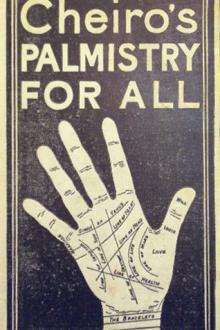The Diary - Samuel Pepys (red white and royal blue hardcover txt) 📗

- Author: Samuel Pepys
Book online «The Diary - Samuel Pepys (red white and royal blue hardcover txt) 📗». Author Samuel Pepys
The comedy of Albumazar was originally printed in 1615, having been performed before James I at Trinity College, Cambridge, by the gentlemen of that society, of which John Tomkis, the author of the play, was a member, on March 9th, 1614. The assertion of Pepys (derived from Dryden’s prologue on the revival of the comedy in 1668) is refuted by the fact that Ben Jonson’s Alchymist was acted four years before Albumazar was produced—namely, in 1610. This play will be found in vol. xi of Hazlitt’s edition of Dodsley’s Old Plays. Angell was one of the original performers in Davenant’s company; but early in his career he acted, as Downes informs us, “women’s parts,” from which he was of course excluded as soon as actresses were substituted. He then seems to have taken up broad comedy; and besides Trinculo, in Albumazar, we find him performing Woodcock, in Shadwell’s Sullen Lovers, a droll part in Lord Orrery’s Master Anthony, and Fribble, in Epsom Wells. ↩
Sir Thomas Fanshawe, K.B., who was created Viscount Fanshawe, of Ireland, in 1661, died in 1665, leaving three sons—Thomas, the Lord Fanshawe here mentioned, and Charles and Simon, who became successively the fourth and fifth viscounts. It is uncertain which of these two is here alluded to. Sir Richard Fanshawe, before noticed, was the youngest brother of the first Lord. —B. ↩
The Order in Council for this meeting of Sir John Minnes, Sir William Penn, and some of the Brethren of the Trinity House, with the Duke of York, is dated February 21st. It is printed in Penn’s Life of Sir W. Penn, vol. ii, p. 460. ↩
See note 3901. ↩
Ibrahim, ou l’illustre Bassa. It was the first of that almost interminable series of “Twelve vast French romances, neatly gilt,” published by Magdaleine de Scuderi. It was printed in 1641. —B. ↩
Christopher Gibbons, organist to the king, and of Westminster Abbey. See note 1070. ↩
John Dolben, afterwards Archbishop of York. ↩
The Bishop of Rochester’s wife was Catherine, daughter of Ralph Sheldon, of Stanton, Derbyshire, and niece of Gilbert Sheldon, afterwards Archbishop of Canterbury. His two sons were Gilbert (1658–1722), who afterwards became one of the judges of the Common Pleas in Ireland, and was created a baronet in 1704; and John Dolben (1662–1710), who was M.P. for Liskeard, and one of the managers of Sacheverell’s impeachment. ↩
A scholar appointed to make a satirical and jesting speech at an Act in the University of Oxford. Mr. Christopher Wordsworth gives, in his Social Life at the English Universities in the Eighteenth Century, 1874, a list of terræ-filii from 1591 to 1713 (pp. 296–298, 680). The terræ filius was sometimes expelled the university on account of the licence of his speech. The practice was discontinued early in the eighteenth century, but a terræ filius appeared on the stage as late as 1763—“he was not, however, a veritable descendant of those quasi-statutable personages who claimed a right, as established by the ancient forms of the university, to exercise their talents for satire and raillery at every celebration of the Act” (Wilberforce, p. 306). ↩
Theatre company of young actors in training. ↩
The Spanish Tragedy, or Hieronymo Is Mad Again, by Thomas Kyd; frequently printed from about 1594. It is included in Dodsley’s Old Plays (Hazlitt’s edition, vol. v). ↩
John Mason. ↩
A pastoral comedy, from the Pastor Fido of Guarini, a translation of which, by D. D., Gent., was published in 1633. ↩
M.P. for Ludlow; and in 1673 elected Speaker, which office he resigned on the plea of ill health. He was successively King’s Serjeant, 1668; Chief Justice of Chester, and a Justice of the Common Pleas (1680–1686). He was restored to his Chief Justiceship of Chester, and created a baronet, 1686; and died May 27th, 1697. ↩
A tragedy by Massinger and Decker. See February 16th, 1660–61. ↩
“Feb. 27, 1668. Hugh Salesbury to Williamson. Sir Thomas Allin has appeared in sight from the Downs with 4 ships named. He met Capt. De la Roche with another French man-of-war, and commanded him aboard, where he now remains; he is stayed for having Capt. [Wm.] Skelton and 200 or 300 English sailors aboard him. Sir Thomas and the French ships are riding at anchor at Spithead.”
“Feb. 27. ⸻ to Williamson. Mons. De la Roche, with his consort, after having left Sir Thomas Allin 2 hours, was forced back by the weather, and then Sir Thomas, having received orders, stopped him, and took from him a small Ostender, which he had taken out of one of our harbours, and also 103 (sic) Englishmen, together with Lieut. Col. Skelton.”
Calendar of State Papers, 1667–68, p. 251↩
The goldsmith. ↩
Mr. (afterwards Sir John) Tippets. See note 1385. ↩
Named in The Gazette Charles the Second, and to carry 106 guns. It replaced the one captured by the Dutch in the Medway. —B. ↩
Of Hartwell, Bucks; created a baronet, 1660. —B. ↩
Henry Coventry. ↩
Sir Heneage Finch. See note 634. ↩
The king. ↩
The order of precedence of peers of Scotland and Ireland was settled by the respective acts of union of Scotland and Ireland, thus—dukes of Scotland follow dukes of England, then come in the





Comments (0)